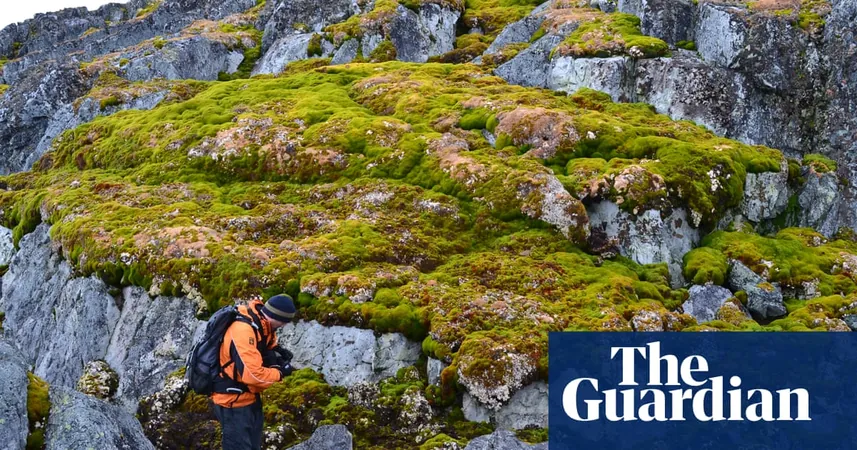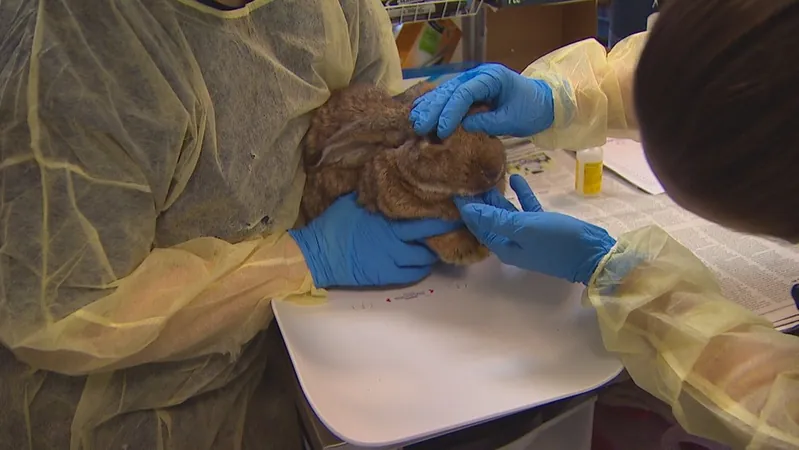
Shocking Green Transformation: Antarctica’s Vegetation Surges Amid Climate Crisis!
2024-10-04
Author: Yan
Shocking Green Transformation: Antarctica’s Vegetation Surges Amid Climate Crisis!
In a stunning revelation, recent studies indicate that plant cover across the Antarctic Peninsula has experienced an astonishing increase of over tenfold in the past few decades, driven by the rampant climate crisis affecting our planet. An analysis of satellite data reveals that in 1986, less than one square kilometer of vegetation was recorded, whereas by 2021, the figure skyrocketed to nearly 12 square kilometers. Researchers noted that this explosive growth, primarily attributed to mosses, has accelerated significantly since 2016.
This unexpected “greening” of Antarctica serves as a stark indicator of the pervasive effects of global warming on a continent traditionally covered by ice and barren rock. Alarmingly, scientists stress that the expansion of plant life could pave the way for invasive alien species to infiltrate the pristine Antarctic ecosystem, posing a significant threat to its unique biodiversity.
The phenomenon of greening is not limited to Antarctica; similar transformations have been reported in the Arctic, underscoring a broader trend of ecological change in polar regions. For instance, notable weather anomalies occurred in 2021 when rain, not snow, fell on Greenland's immense ice cap for the first time in recorded history, signaling a troubling shift in climate patterns.
Dr. Thomas Roland from the University of Exeter, who co-led the study published in Nature Geoscience, described the situation poignantly: "The Antarctic landscape remains predominantly characterized by snow, ice, and rock, with only a minuscule fraction inhabited by plant life. Yet, that small part has witnessed unprecedented growth, highlighting that even this remote wilderness is being irrevocably impacted by human-induced climate change." To put it in perspective, the total area of the peninsula spans about 500,000 square kilometers!
As these changes unfold, experts like Professor Andrew Shepherd from Northumbria University note the immediate and long-term implications. Reflecting on his visit to the Larsen Inlet, where a once-concealed beach unveiled itself post the Larsen Ice Shelf collapse, he remarked, "Finding a river adorned with green algae in a place that had been shielded from the atmosphere for millennia is nothing short of astonishing."
The rapid proliferation of moss since 2016 aligns with observed declines in sea ice around Antarctica. Researchers suggest that the resultant warmer waters may be creating wetter conditions conducive to plant growth. Mosses, capable of colonizing bare rock, are essential as they lay the groundwork for soil formation, which could, in turn, support the growth of additional plant species.
Dr. Olly Bartlett of the University of Hertfordshire, also a co-leader of the study, highlighted the potential consequences of this transformation, stating, "While Antarctic soil is primarily poor or even absent, the increase of vegetation will contribute organic material and support soil development. This raises alarms about the risk of non-native and invasive species arriving, potentially brought in by eco-tourists and researchers visiting the continent."
Echoing the urgency of the situation, previous studies corroborate the uptick in moss growth, though they hadn’t quantified the area. Notably, recent findings from 2022 revealed that Antarctica’s two indigenous flowering plants are also expanding their reach on Signy Island, located north of the Antarctic Peninsula.
As we continue to witness these dramatic environmental shifts in one of the planet's most untouched ecosystems, the global community is reminded of the pressing need to address climate change before it leads to irreversible consequences for Antarctica and the world at large.




 Brasil (PT)
Brasil (PT)
 Canada (EN)
Canada (EN)
 Chile (ES)
Chile (ES)
 España (ES)
España (ES)
 France (FR)
France (FR)
 Hong Kong (EN)
Hong Kong (EN)
 Italia (IT)
Italia (IT)
 日本 (JA)
日本 (JA)
 Magyarország (HU)
Magyarország (HU)
 Norge (NO)
Norge (NO)
 Polska (PL)
Polska (PL)
 Schweiz (DE)
Schweiz (DE)
 Singapore (EN)
Singapore (EN)
 Sverige (SV)
Sverige (SV)
 Suomi (FI)
Suomi (FI)
 Türkiye (TR)
Türkiye (TR)